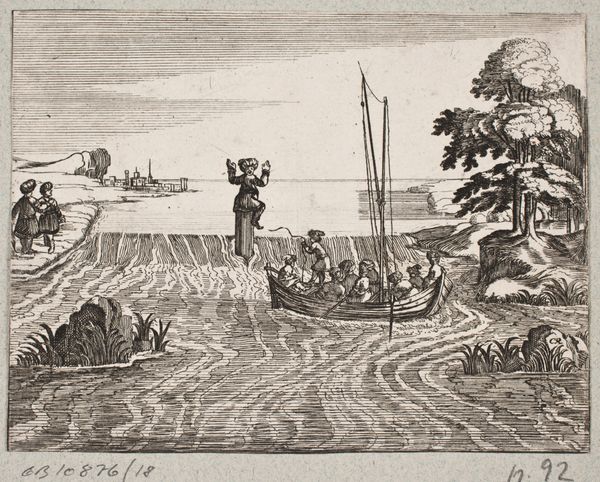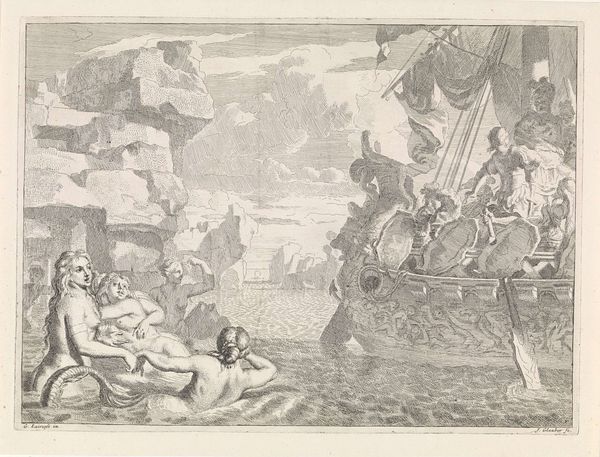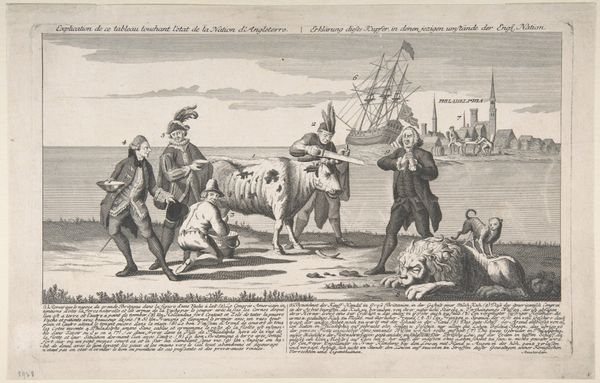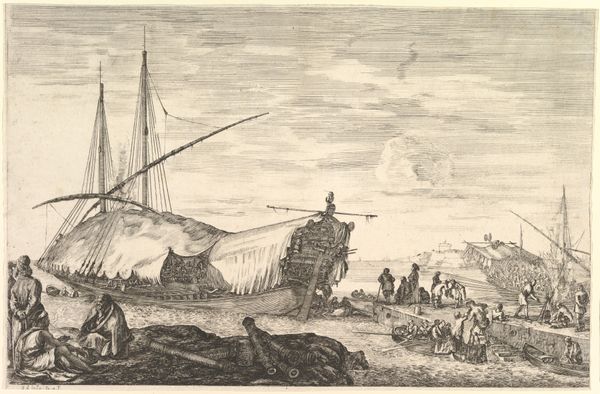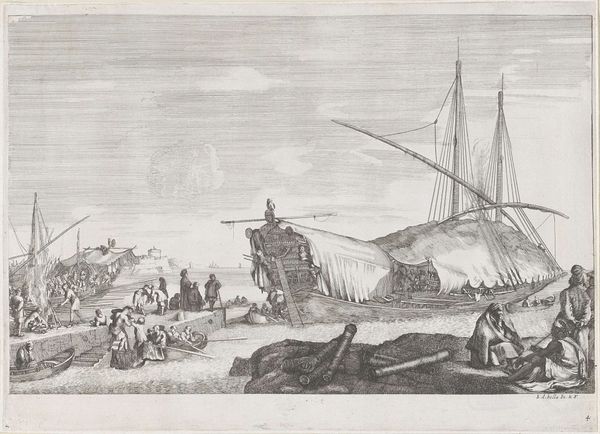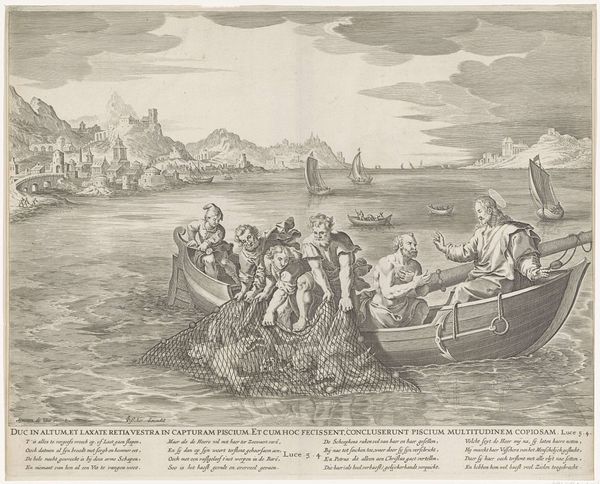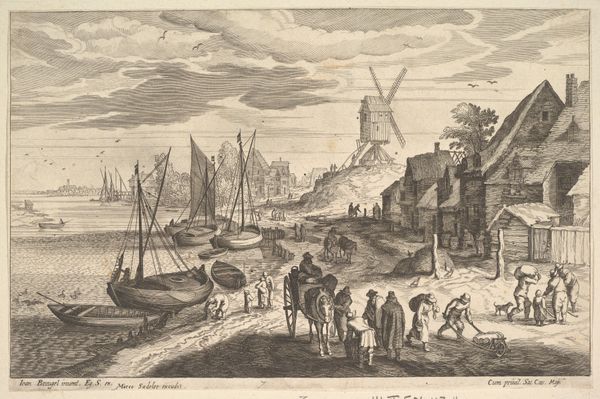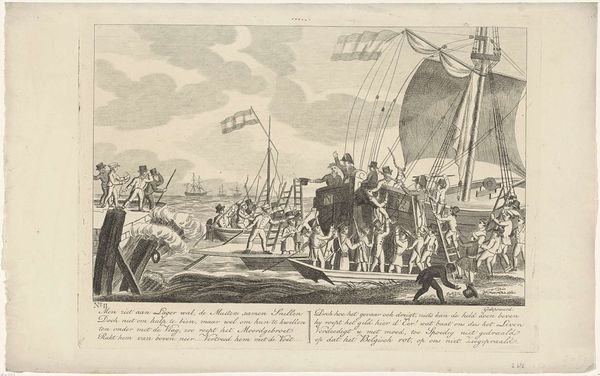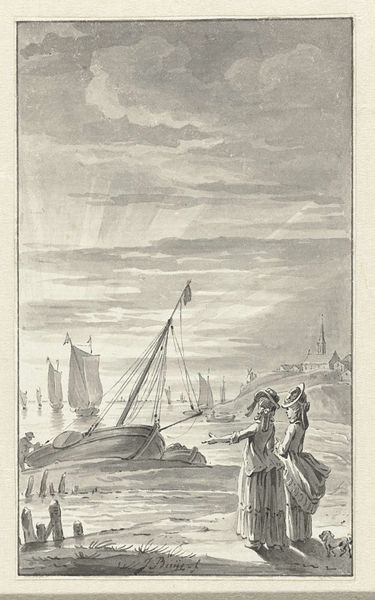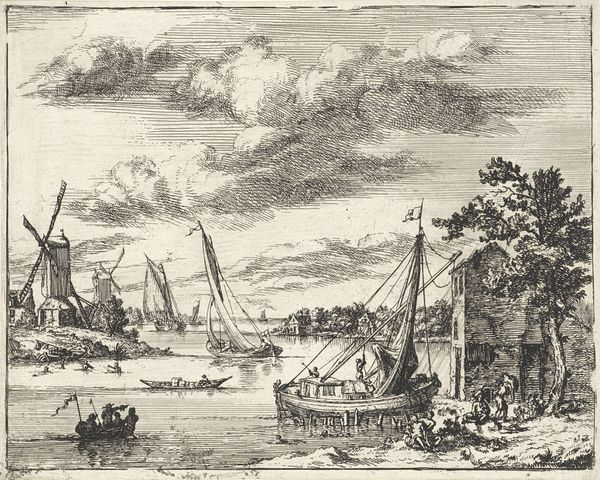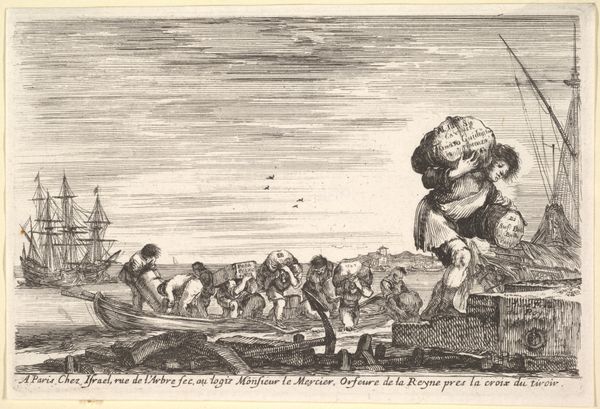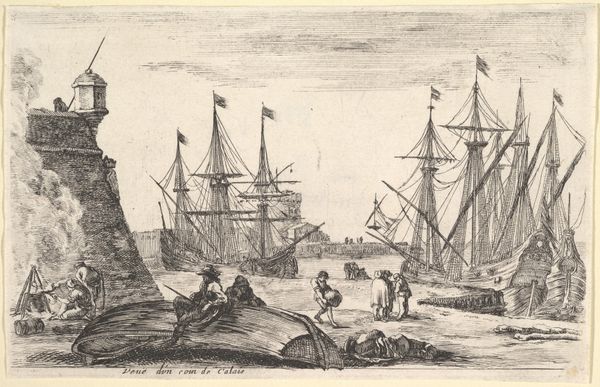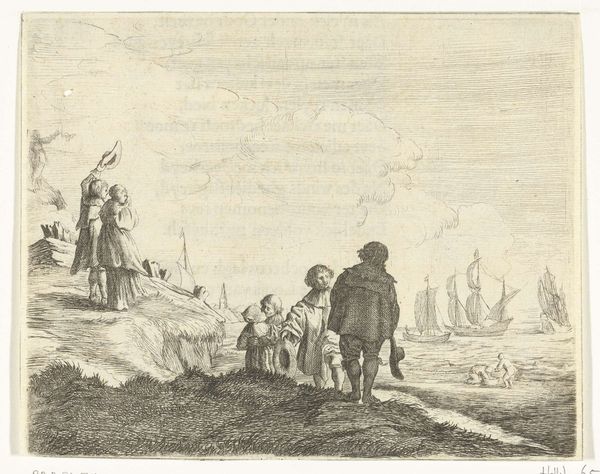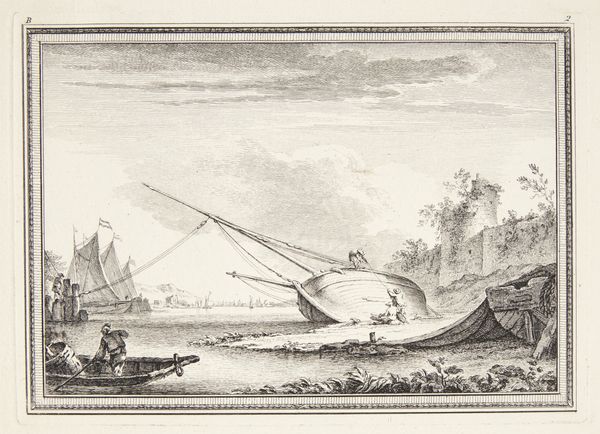
drawing, print, engraving
#
drawing
#
narrative-art
# print
#
caricature
#
cityscape
#
history-painting
#
engraving
Dimensions: plate: 6 7/8 x 7 5/8 in. (17.5 x 19.4 cm) sheet: 7 11/16 x 10 5/16 in. (19.5 x 26.2 cm)
Copyright: Public Domain
Curator: Here we have a political print from 1766, "Goody Bull or the Second Part of the Repeal," created by an anonymous artist. The print, rendered as an engraving, currently resides here at the Metropolitan Museum of Art. The starkness of the medium sets the stage for sharp commentary, I feel. Editor: Indeed. The linear precision, even in the turbulent sea, immediately conveys a sense of calculated mockery. Look at the posture of each figure; the visual weight is meticulously distributed. Curator: Note the lion, the symbol of Great Britain, lounging indolently among scattered packages. It visually establishes Britain’s relationship with the economic implications of the Stamp Act repeal. It's quite dejected isn't it. Editor: Precisely. The languid lion is a perfect counterpart to the caricature of Britannia herself—that’s Britannia, is it not, there assisted ashore—supported, or rather undermined, by another female figure. Curator: Yes, she's interpreted as America who supports Britannia as a second act to the Stamp Act repeal plays out. The figures in the foreground, then, all seem weighed down by the burden of commerce, as if the act of unloading these crates is an oppressive endeavor. They appear far from triumphant. Editor: And the "triumph," is clearly reserved for Grenville, raised up on the memorial in the background, heralded by cupids with the banner. However, its illegibility undermines his symbolic apotheosis as he stands alone on a gravemarker for himself. Curator: Notice how the artist utilizes line to direct our gaze through various strata of commentary. From the active, almost chaotic foreground, up to the ships representing international commerce, then resolving on that funereal monument and the erased claims above it. Editor: And beyond that to the barely legible landscape and that little fortified outpost beyond. It seems as if everything in this piece, every symbol, every line, speaks to underlying political anxieties and uncertain futures, despite its proclamations. A formal arrangement fraught with tensions. Curator: Absolutely. The enduring power of symbols lies not only in their immediate recognition, but in the deeper stories, emotions, and questions they evoke. Editor: Indeed, it demonstrates how art distills a moment in history—a potent mixture of ambition, folly, and doubt—into a singular image that transcends time.
Comments
No comments
Be the first to comment and join the conversation on the ultimate creative platform.
